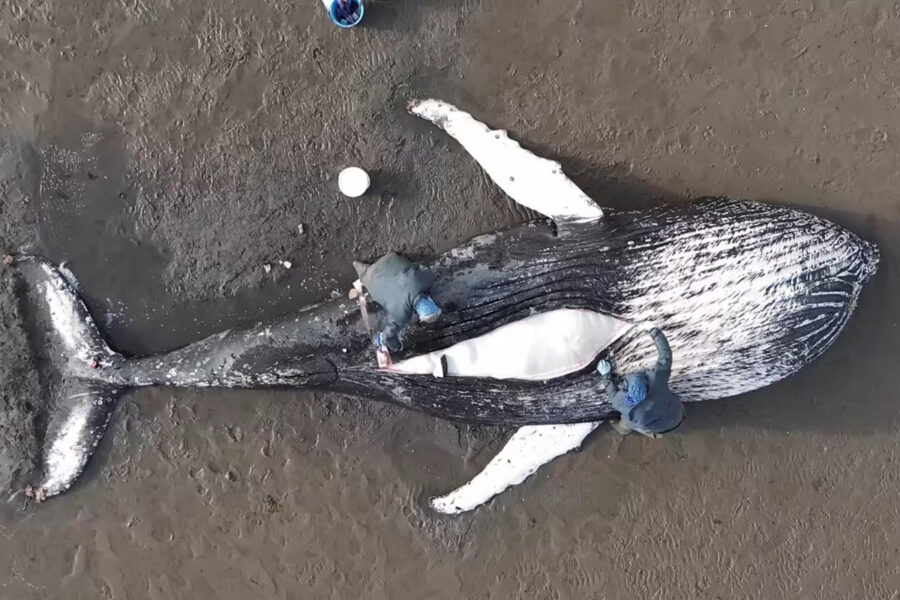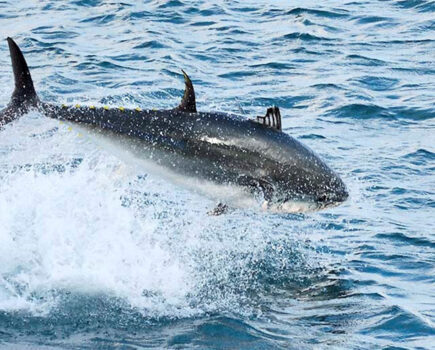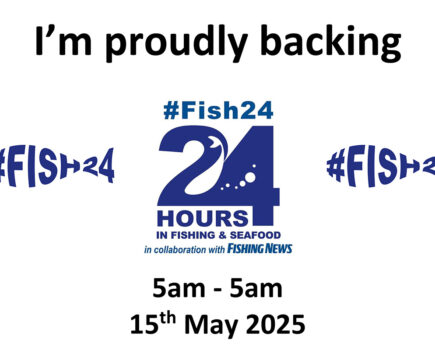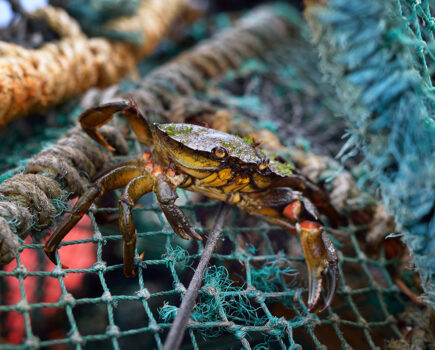With fisheries-cetacean interactions in the news again, the onus is on fishermen to safeguard their future by taking the lead in devising mitigations
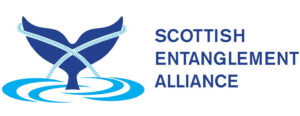
A recent spate of entanglements on Scotland’s east coast has put the focus on cetacean-fisheries interactions once again. As featured in previous issues of Fishing News, the Scottish Creel Fishermen’s Federation (SCFF) has been working in collaboration with various agencies in Scotland to better understand the nature and scale of entanglements in our waters, and potential mitigation strategies.
In early 2018, a collaboration between six organisations – SCFF, British Divers Marine Life Rescue, NatureScot, the Scottish Marine Animal Stranding Scheme, Whale and Dolphin Conservation and the Hebridean Whale and Dolphin Trust – resulted in the formation of the Scottish Entanglement Alliance (SEA). This was funded by the European Maritime and Fisheries Fund, with more recent funding provided by the Nature Restoration Fund.
The principal objective of the project has been to work with the fishing industry to improve our understanding of marine animal entanglements (whale, dolphin, shark and turtle) in Scotland’s waters and begin working towards developing practical and proportional mitigation strategies to reduce future entanglement risk.
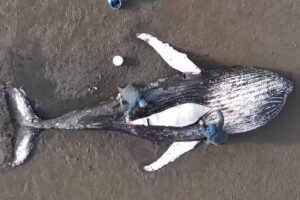
Scientists undertaking the autopsy of the juvenile humpback whale washed up on Loch Fleet beach last week. These routinely involve scientists taking a wide range of tissue samples, and analysis of the stomach contents of the individual. Such work not only provides insights into the health of the individual whale, but can also help determine underlying long-term factors affecting population health, such as accumulation of pollutants in the flesh or blubber, or a change in diet. (Photo: Tracks Ecology)
Although the focus has been on entanglements in creel fishing gear, entanglements are known to occur in other gear types including trawls, gill-nets and longlines, as well as in marine debris.
Where entangling material is no longer attached to a carcass under examination, entanglement can be diagnosed as the cause of or a contributing factor in the death of an animal through the assessment of gear impressions (from which rope diameter or net mesh size can be deduced), scarring, and injuries noted during post-mortems.
The results of these investigations, together with data derived from other sources including gear abundance estimates, interviews with fishermen, and sightings maps, is beginning to give researchers a clearer idea of the scale of entanglement in Scottish waters, and the potential conservation and welfare impacts this may be having on particular species.
While SEA has focused initial efforts on the inshore creel sector, a similar collaborative approach is being adopted in other fisheries round the UK coastline. For example, ‘pingers’ to warn porpoises of the presence of gill- nets, and the addition of reflective beads on netting and on headline floats, are being trialled in the South West of England.
Although fishermen, conservation groups and academics can often be seen to have their own agendas, the SEA project has demonstrated that with the appropriate level of trust and goodwill from all sides, significantly more progress can be made by collaborating than any group could achieve in isolation.
The sea project has been very innovative in adopting a holistic approach to finding solutions to marine animal entanglement, from training fishermen to safely disentangle large whales, to trialling alternative gear types and presenting findings at national and international conferences and parliamentary meetings.
At present, 15 prawn creel vessels on the west coast of Scotland are trialling negatively buoyant ropes. This ‘sinking groundlines project’, funded by NatureScot’s Nature Restoration Fund, is showing great promise as an entanglement mitigation strategy.
Although fishermen have expressed concerns regarding the costs associated with implementing this strategy on any large scale, we note that in every country where sinking lines have been mandated in specific areas, this change has always been accompanied by financial assistance. However, due to these concerns, we are also investigating low-cost alternatives such as retrofitting existing gear by adding leadline or weights.
Although widely used in other fisheries, weighted line is less common in some of Scotland’s creel fisheries, where buoyant/ floating rope is favoured. However, feedback from fishermen who had experienced a marine animal entanglement revealed that a majority of animals had become ensnared in the groundline, which can rise several metres above the seabed between creels. Sinking line lies flush along the seabed, therefore removing this rope from the water column.
Once this became understood, it didn’t take the fishermen involved in the project long to propose the possible solution – and this just illustrates the benefits of this collaborative approach.
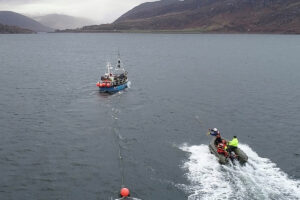
Creel fishermen undertaking practical training on cetacean disentanglement off Ullapool. (Photo: Oceans Unmanned)
The fishermen, and even NatureScot, were equally quick to identify all the possible drawbacks to adopting this solution. Those ranged from the obvious costs of the rope to the less obvious possible additional seabed abrasion and becoming ‘fast’ more often, and from additional expense of time to the sheer logistics challenge of swapping out vast quantities of existing fishing gear. These insights have informed the current phase of this work, and a modest-scale trial has been initiated to investigate all those issues.
Other initiatives suggested by fishermen that may reduce entanglements, and that are being explored in this current project, are determining optimal end-line scope, and weighting arrangements with various-sized buoys both of traditional and low-drag configurations.
Although SCFF did undertake some informal trials of the so-called ‘ropeless’ or ‘on-call’ systems currently being trialled in US and Canadian pot fisheries (see opposite), fishermen found these to be prohibitively expensive and cumbersome to use.
However, off the back of those trials, with funding from The Fishmongers’ Company, and in partnership with Heriot-Watt University, SCFF has initiated a long-term research project to develop a low-cost custom acoustic release system, suitable for use in commercial creel fishing, as a potential alternative/ complementary mitigation.
This type of system would remove the need for vertical end- lines in the water column, which research has shown also pose an entanglement risk. However, a working prototype is not expected for several years.
SCFF and SEA partners continue to work towards ensuring that any entanglement mitigation measures are appropriate, practical, proportionate, and developed with the support of the fishing industry.
Fishermen from all sectors are invited to get involved with the SEA project, more details of which are available here.
This story was taken from the latest issue of Fishing News. For more up-to-date and in-depth reports on the UK and Irish commercial fishing sector, subscribe to Fishing News here or buy the latest single issue for just £3.30 here.
Sign up to Fishing News’ FREE e-newsletter here.

